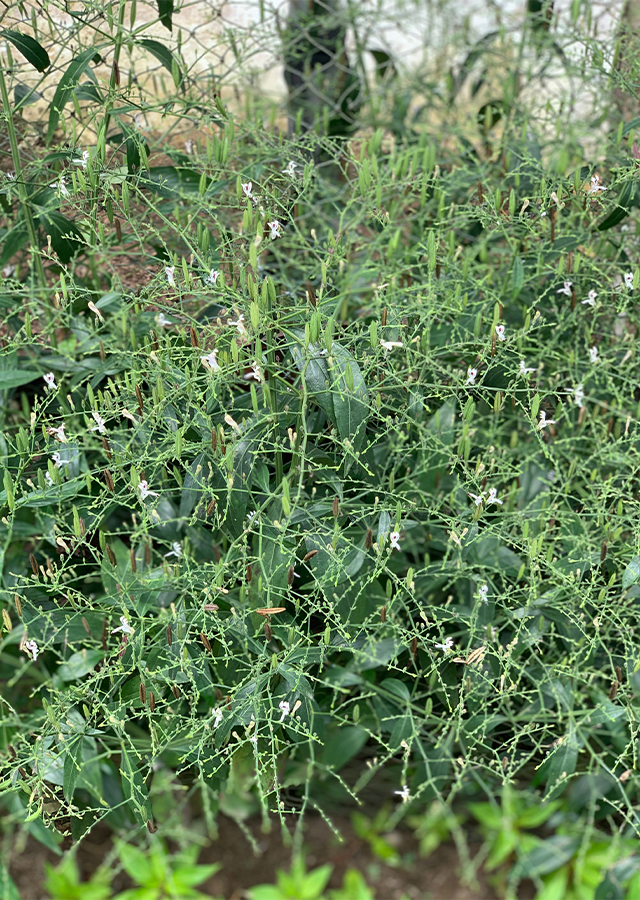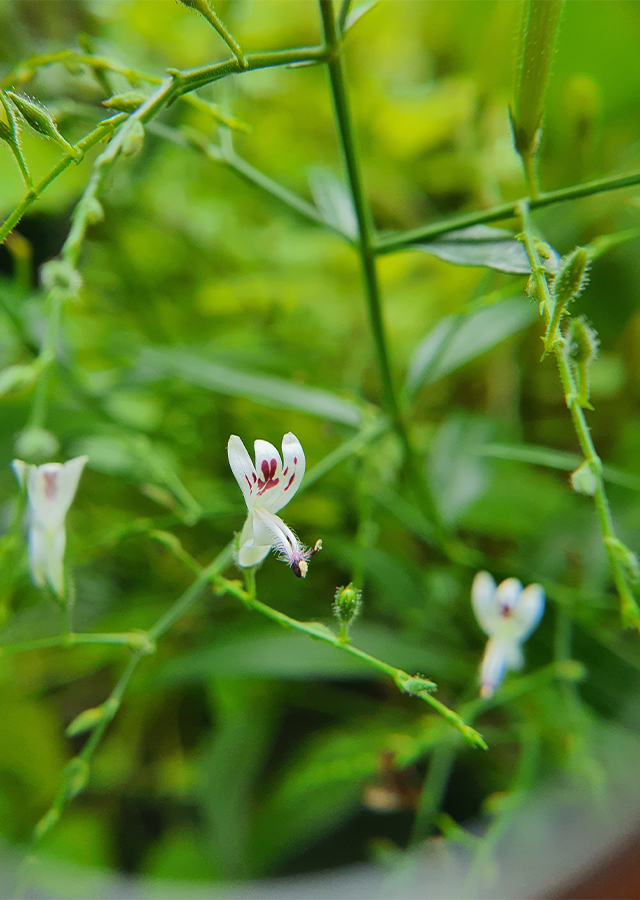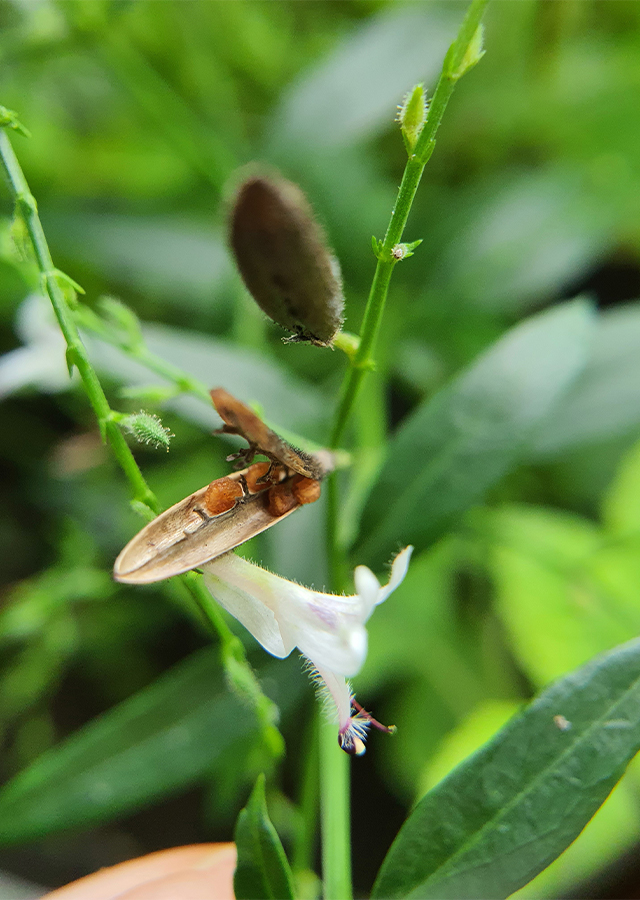King of Bitter
Andrographis paniculata (Burm.f.) Nees
Acanthaceae
Location in our garden
Principal



Synonym
Justicia latebrosa Russell ex Wall
Justicia paniculata Burm.f.
Justicia stricta Lam. ex Steud.
Habitus
Herbaceous. An annual plant, erect, up to 30-110 cm long
Part Used
Leaves
Roots
Stem
Growing Requirements
Need Shade
Habitat
Forest
Roadside
Grassland
Overview
Andrographis paniculata is a native to Assam, Bangladesh, India, and Sri Lanka. Then its distribution spread and introduced to Malaysia, Indonesia, the West Indies, and Americas. Extremely bitter in taste in all parts of the plant body and known as "king of bitters". The plant is often used for the treatment of infections before the development of antibiotics.
Vernacular Names
Sambiloto (Indonesia), Segagyi (Burmese), Chuan xin lian (Chinese), Hempedu bumi (Malay), Roi des amers (French), Kalmegh (India), Aluy (Philippines), Fa thalaai (Thai), Công cộng (Vietnamese).
Agroecology
Andrographis paniculata has weedy features and occurs in village groves, roadsides, waste areas, open sandy locations and teak forests. This plant can be found in the open field at sea-level up to 1,600 m. Any soil with a decent amount of organic matter is ideal for this crop and a shady place with 10-20 percent of the sunlight is needed for cultivation.
Morphology
- Roots - taproot.
- Stems - dark green, 0.4-1.0 m in height, 2-6 mm in diameter, quadrangular, much branched, easily broken, fragile texture.
- Leaves - simple, up to 8 cm long and 2.6 cm broad, opposite, lanceolate, glabrous, pinnate.
- Flowers - small and solitary, corolla whitish or light pink in color with hairs, capsules linear-oblong, acute at both ends, and contains 2-4 seeds.
- Seeds - numerous, subquadrate, yellowish brown.
Cultivation
- Generative propagation is by seeds.
- Vegetative propagation is trough stem cuttings. Cuttings consisting of 3 nodes taken from the upper third of 1-year-old plants.
Chemical Constituents
Andrographolide, neoandrographolide, quinic acids, deoxyandrographolide, chloroform extract, bitter diterpene, lactones, diterpene glucosides, flavonoids.
Traditional Medicinal Uses
- Cardioprotective, antioxidant, hepatoprotective, antidiarrheal, antipyretic, anti-infective, anti-inflammatory, antibacterial, antifungal, anti-malarial, anti-hepatotoxic, anti-cancer, anti-dengue, anti-diabetic, and renoprotective activities have been demonstrated in research.
- It is abdominal, febrifuge, tonic, and immune-boosting.
- It is used for fevers and to eliminate toxins from the body in Traditional Chinese Medicine.
- It is used in Scandinavian countries to avoid common colds and to treat them.
- It is used to prevent sore throats, flu, and upper respiratory tract infections in China, India, Thailand, and Malaysia.
- In India, powdered herb decoction is used for palm and foot post-partum burning sensations. For dysmenorrhea, leaves blended with ground black pepper are used. For intestinal worm infestation, roots and stems are made into paste, mixed with mother's milk and taken internally. For eczema, a powdered herb mixed in oil is added. Leaf paste, for abscesses, is used externally. In Ayurvedic medicine, used in 26 Ayurvedic formulations to treat liver disorders, aerial components and diabetes.
Part Used
Reference Sources
Siew, Y.Y., Zareisedehizadeh, S., Seetoh, W.G., Neo, S.Y., Tan, C.H. & Koh, H.L. (2014).Ethnobotanical survey of usage of fresh medicinal plants in Singapore. Journal of Ethnopharmacology 155: 1450-1466.


